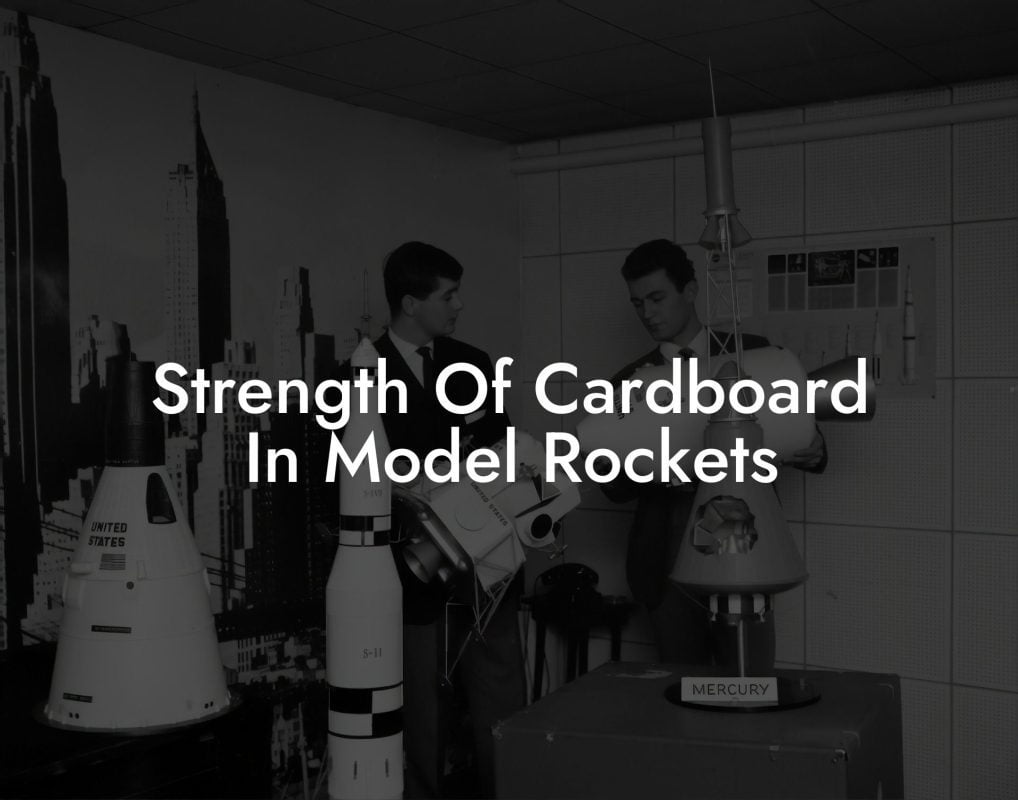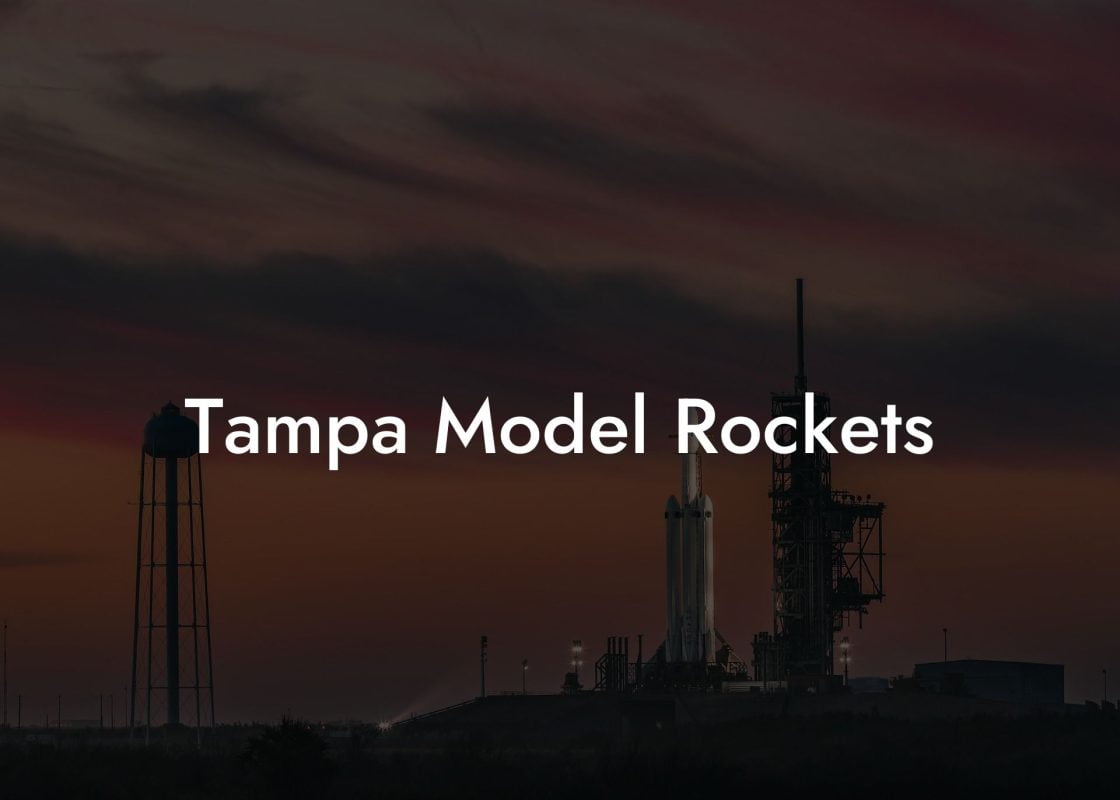Imagine the thrill of watching your very own model rocket soar into the sky, leaving a trail of excitement and wonder in its wake. Welcome to the world of big model rockets, where the boundaries of imagination and innovation know no limits. Whether you're a seasoned enthusiast or just starting out, this comprehensive guide will propel you into the stratosphere of model rocketry, covering everything from the basics to advanced techniques and expert tips.
Quick Links to Useful Sections
- What Are Big Model Rockets?
- The Anatomy of a Big model rocket
- Choosing the Right Big Model Rocket Kit
- Building and Customizing Your Big Model Rocket
- Flying and Recovering Your Big Model Rocket
- Big Model Rocketry Communities and Resources
- Frequently Asked Questions About Big Model Rockets
- Resources and Community Support: Your Next Steps
What Are Big Model Rockets?
Big model rockets are scaled-down versions of real rockets, designed to mimic the look, feel, and performance of their full-sized counterparts. They can range in size from a few inches to several feet tall, with varying levels of complexity and detail. From simple, entry-level kits to intricate, custom-built masterpieces, big model rockets offer a unique combination of art, science, and adventure.
Whether you're interested in building, flying, or simply collecting model rockets, the hobby offers a wide range of benefits, including improved problem-solving skills, enhanced creativity, and a deeper appreciation for STEM education.
The Anatomy of a Big model rocket
A typical big model rocket consists of several key components, each playing a critical role in its overall performance and safety.
- Nose Cone: The nose cone is the pointed, forward section of the rocket, designed to reduce air resistance and protect the payload during ascent.
- Body Tube: The body tube is the main structural component of the rocket, housing the motor, recovery system, and payload.
- Fins: The fins provide stability and guidance during flight, ensuring the rocket stays on course and recovers safely.
- Motor: The motor is the heart of the rocket, generating thrust and propelling the vehicle into the air.
- Recovery System: The recovery system, typically consisting of a parachute or streamer, slows the rocket's descent and returns it safely to Earth.
Choosing the Right Big Model Rocket Kit
With so many big model rocket kits available, selecting the right one can be overwhelming. Here are some key factors to consider:
Looking For The Best Model Rocket Kits? You'll Love These:
- Skill Level: Choose a kit that matches your skill level, from beginner-friendly options to advanced, expert-level projects.
- Scale: Consider the size of the rocket, ranging from small, compact models to large, imposing vehicles.
- Detail: Decide on the level of detail and realism you want, from simple, straightforward designs to intricate, highly detailed models.
- Motor Type: Select a kit that accommodates your preferred motor type, including A, B, C, and D motors.
Building and Customizing Your Big Model Rocket
Building a big model rocket is a rewarding, creative process that requires patience, skill, and attention to detail. Here are some expert tips to help you get started:
- Follow the Instructions: Carefully read and follow the manufacturer's instructions to ensure a successful build.
- Choose the Right Materials: Select high-quality materials, including balsa wood, plastic, and other durable components.
- Add Custom Details: Personalize your rocket with custom paint schemes, decals, and other creative touches.
- Test and Refine: Conduct thorough tests and refine your design to ensure optimal performance and safety.
Flying and Recovering Your Big Model Rocket
The thrill of launching your big model rocket is unmatched, but safety should always be your top priority. Here are some essential tips for flying and recovering your rocket:
- Choose a Safe launch Site: Select a wide, open area with minimal obstacles and no overhead hazards.
- Check the Weather: Avoid flying in strong winds, heavy rain, or other adverse weather conditions.
- Follow Launch Procedures: Adhere to established launch protocols, including countdowns and safety checks.
- Track and Recover: Use a tracking device and recovery system to ensure a safe, successful recovery.
Big Model Rocketry Communities and Resources
Joining a community of like-minded enthusiasts can help you stay inspired, learn new skills, and connect with others who share your passion for big model rockets.
- Online Forums: Participate in online forums, social media groups, and discussion boards dedicated to model rocketry.
- Local Clubs: Join a local model rocketry club or organization to connect with fellow enthusiasts and attend events.
- Manufacturer Resources: Take advantage of manufacturer-provided resources, including tutorials, FAQs, and customer support.
Frequently Asked Questions About Big Model Rockets
Here are some frequently asked questions about big model rockets, covering everything from safety concerns to technical specifications:
1. Are big model rockets safe?
Yes, when built and flown according to safety guidelines and regulations, big model rockets are safe and enjoyable.
2. What is the largest model rocket I can build?
The largest model rocket you can build depends on your skill level, resources, and local regulations. Always follow safety guidelines and ensure your rocket complies with local laws and regulations.
3. Can I customize my big model rocket?
Absolutely! Customizing your big model rocket is a great way to express your creativity and make your rocket truly unique.
4. How high can a big model rocket fly?
The altitude your big model rocket can reach depends on the motor type, design, and weather conditions. Always follow safety guidelines and ensure your rocket is designed for safe, controlled flight.
Resources and Community Support: Your Next Steps
Congratulations on taking the first step into the world of big model rockets! To continue your journey, explore the following resources and community support:
- Manufacturer Websites: Visit manufacturer websites for tutorials, FAQs, and customer support.
- Online Forums: Participate in online forums and discussion boards dedicated to model rocketry.
- Local Clubs: Join a local model rocketry club or organization to connect with fellow enthusiasts and attend events.
- YouTube Channels: Subscribe to YouTube channels focused on model rocketry, featuring tutorials, reviews, and flight videos.
Remember, the world of big model rockets is a community-driven hobby. Stay connected, stay inspired, and keep reaching for the stars!
Looking For The Best Model Rocket Kits? You'll Love These:
Useful Interruption: Dive deeper into the world of Model Rockets with our most popular sections. If there is anything you think is missing or anything you would love for us to write about, just give us a shout.
- Getting Started & Basics With Model Rockets
- Model Rocket Design, Build & Customization
- Model Rocket Propulsion & Engine Technology
- Model Rocket Launch Techniques & Recovery
- Model Rocket Advanced Rocketry & Innovations
- Model Rocket DIY and Customization
- Model Rocket Equipment Reviews & Digital Tools
- Community, Competitions & Education
- Model Rocket Troubleshooting & FAQs
- Model Rocket Bonus/Seasonal & Niche Topics
A group of model rocket enthusiasts gathered at a field for their weekly launch event. Among them was Dave, a seasoned builder known for pushing the limits of hobby rocketry. This time, he had outdone himself.
“Ladies and gentlemen,” Dave announced, dramatically pulling a cloth off his latest creation, “I present to you: The Kraken!”
The crowd gasped. This wasn’t just a model rocket—it was a monster. The thing stood 8 feet tall, had six clustered engines, and was covered in enough duct tape to qualify as a classified aerospace project.
“Dave,” muttered Steve, the cautious safety officer, “Have you, uh… done the math on this?”
“Math?” Dave scoffed. “I built it in my garage at 3 a.m. with parts from eBay. This is an art piece, Steve.”
The countdown began.
5…
4…
3…
2…
1…
The engines ignited with a BOOM, and The Kraken shot up… kind of. It immediately did a violent barrel roll, narrowly missing the spectators before skyrocketing at an angle that could only be described as “legally questionable.”
The crowd collectively ducked as The Kraken flew straight over the adjacent cornfield, where Old Man Jenkins, the grumpiest farmer in town, was minding his business.
KABOOM!
The rocket disappeared behind the barn. A moment later, a flaming piece of Estes igniter wire landed at Steve’s feet. The silence was deafening.
And then—an unmistakable sound echoed across the field.
Jenkins’ shotgun being cocked.
“DAVE!!!” Steve shouted. “RUN.”
And that was the day Dave invented the first-ever biologically powered rocket booster: pure adrenaline.
To this day, nobody knows where The Kraken landed, but legend has it, it still haunts the skies, terrifying unsuspecting drones and low-flying birds.















